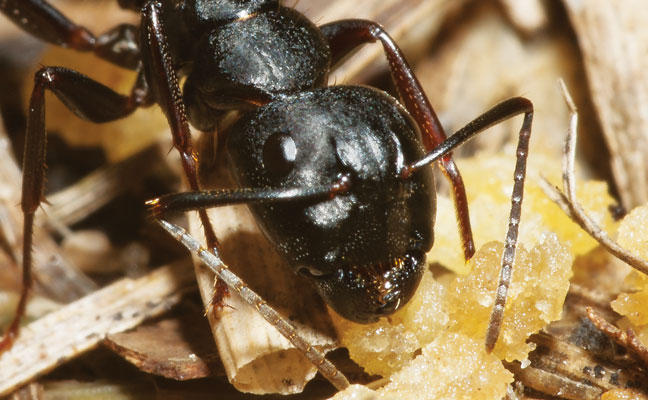
Photo: © Gene White
We asked Pest Management Professional’s columnists and editorial advisory board members share what ant species they think pest management professionals (PMPs) should be alert for. Here are some of the experts’ responses from our March 2024 print edition.
Please take a minute to answer our latest one-question poll on this topic: Reader poll: What’s an emerging ant species for which pest management professionals should be on alert?
PMP’s Editorial Advisory Board and Regular Contributors

Dr. Hamilton Allen, BCE
Dr. Hamilton Allen, BCE: “In Central and Southern Florida, we’re seeing an increased presence of the bicolored trailing ant (Monomorium floricola). The pesky ants are difficult to control because they display similar indoor nesting and variable foraging behaviors of their close relative, the pharaoh ant (M. pharaonis).”
Doug Foster: “The Asian needle ant (Brachyponera chinensis) is an invasive species new to Indiana, and it’s important for several reasons. It is cold-tolerant, giving it an advantage over native ant species, and it is capable of stinging. In addition, sugar-based baiting strategies appear to be ineffective for their control.”
Jerry Schappert, ACE: “One newly emerging species in Florida is the compact carpenter ant (Camponotus planatus), which tends to be active during the day. This means customers are seeing the ants more often than they would other carpenter ant species, which tend to be nocturnal.”

Dr. Faith Oi
Dr. Faith Oi: “Yellow crazy ants (Anopolepis gracilipes) are in Hawaii, but not yet confirmed in the continental United States. They are on the Top 100 global invasive species list, however, and they are a threat to wildlife and biodiversity. Also, maybe it’s more of a re-emergence, but I’m hearing more about pharaoh ants again. Little fire ants (Wasmannia auropunctata), also known as electric ants, also are on the move.”
Mark Sheperdigian, BCE: “Everyone should be on the lookout for several tramp ant species that may be moved around by commerce and can be quite difficult to control once they become established in buildings. The most important of these would be the white-footed ant (Technomyrmex difficilis) and the ghost ant (Tapinoma melanocephalum). Both species have been in North America for many years, but are expanding to new areas. Neither of these species are likely to become established outdoors, but they are well known to take up residence in greenhouses, zoos and other facilities that have extensive interior and underground environments.”
Leave A Comment